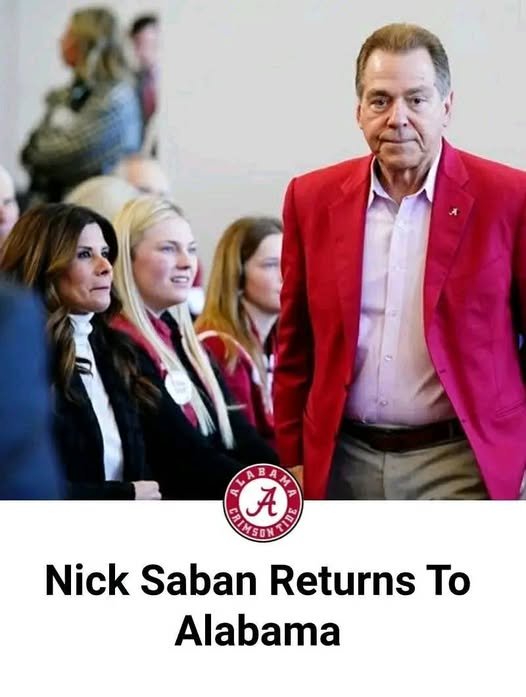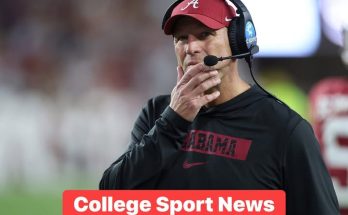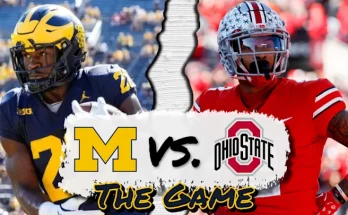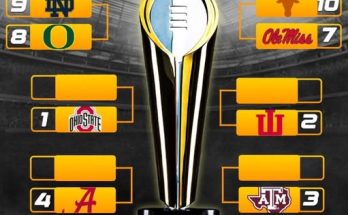The college football world has seen its fair share of twists and turns, but few developments have rocked the sport quite like the jaw-dropping return of Nick Saban to the Alabama Crimson Tide. Just months after stepping away from the game and announcing his retirement in January, the legendary coach has shocked fans, players, and analysts alike by returning to the sidelines in what many are calling the most unprecedented comeback in college football history. The man widely regarded as the greatest coach in the sport’s modern era has unfinished business — and once again, all eyes are on Tuscaloosa.
Saban’s decision to retire after the 2023 season sent ripples across the landscape of college football. His résumé was already cemented in immortality: seven national championships, over 290 career wins, a slew of SEC titles, and a dynasty at Alabama that reshaped what it meant to dominate in the modern era. His departure marked the end of an epoch, signaling a power vacuum not just in the SEC but in the sport as a whole. Recruits re-evaluated their commitments. Coaches circled like vultures. Pundits speculated whether Alabama could remain elite without its general at the helm.
His retirement tour was celebrated and respectful, a graceful exit befitting his status. He embraced a new chapter as a television analyst and ambassador for the sport. While fans missed his sideline intensity, many accepted that the game’s greatest mind had earned his rest. The program handed the reins to Kalen DeBoer, an up-and-coming coach from Washington who had led the Huskies to a national championship appearance. While DeBoer brought his own brand of energy and optimism, it became clear early that the fit wasn’t seamless. Cultural clashes, recruiting hiccups, and an uncharacteristically average spring left boosters and fans whispering that something wasn’t quite right.
But no one — absolutely no one — expected what happened next.
Sources indicate that Saban had remained involved behind the scenes more than initially reported. His relationship with Alabama’s administration never wavered. He continued living in Tuscaloosa, remained connected to the program through advisory roles, and quietly mentored younger coaches. But the real turning point, according to insiders, came in mid-June when a high-profile recruiting weekend fell flat, and key five-star commitments began to lean toward rivals like Georgia and LSU. The Alabama standard — Saban’s standard — was slipping. For a man who built a dynasty on precision, discipline, and relentless excellence, that was intolerable.
While the conversations about his return began informally, they escalated quickly. By early July, boosters had mobilized. Players, both current and former, reached out to Saban. Rumors swirled among insiders, but the idea seemed too fantastical to gain traction. After all, when a 72-year-old legend walks away from coaching, he usually doesn’t come back. But Saban has never been usual. He’s never played by conventional rules. He’s never allowed the opinions of outsiders to dictate his path.
And so, with a quiet but decisive boardroom meeting in early July, the unthinkable became real: Nick Saban agreed to return as Alabama’s head coach.
The announcement, made official via Alabama’s athletic department on a sunny Monday morning, sent shockwaves through social media, message boards, and newsrooms. The headline — “SABAN RETURNS” — broke the internet in sports terms. Within minutes, major recruits began posting cryptic messages hinting at recommitments. Vegas updated its betting lines. Coaches from across the nation began revising their game plans. ESPN and every major outlet devoted full-day coverage. The GOAT was back.
Critics have questioned the optics. They argue that DeBoer never had a real chance and that this sets a dangerous precedent of impulsive decision-making at the top of a program. But those who know Alabama — and know Saban — understand this wasn’t a rash move. It was a calculated course correction by a man obsessed with excellence, committed to legacy, and deeply tethered to a university that gave him the platform to become a legend.
The ramifications are staggering. In an NIL-driven, transfer-portal-powered era where stability is fleeting, Saban’s return injects an immediate dose of credibility and control. Alabama, which had slipped slightly behind Georgia and Michigan in recent recruiting rankings, suddenly looks poised to reclaim the top spot. High school coaches, families, and blue-chip prospects all say the same thing: “If Saban’s back, I’m listening.”
Within 48 hours of the announcement, multiple five-star prospects who had previously decommitted from Alabama reopened their recruitment. Transfer portal whispers began suggesting players would return or reconsider their destinations. Assistants rumored to be looking for greener pastures put those plans on hold. The message was clear — the empire was not only stable, it was reawakened.
But what motivated Saban to return? Was it ego? Was it dissatisfaction with his successor? Was it simply boredom? According to those close to him, the answer lies in something deeper: legacy.
Despite all he had achieved, Saban remained restless in retirement. Friends noted he missed the routine, the players, the pursuit. While he was a natural on television, the sidelines were his true home. There was also unfinished business. Saban, who had watched Kirby Smart and Jim Harbaugh hoist recent trophies, reportedly felt the tide had shifted — and not in favor of the Tide. It gnawed at him. The very idea that Alabama might slip into mediocrity on his watch — even in retirement — was unacceptable.
The road ahead will not be easy. Saban returns to a dramatically different college football landscape than the one he ruled even five years ago. NIL deals have turned recruiting into corporate negotiations. The transfer portal can gut a roster overnight. Conference realignment has turned traditional rivalries and rhythms into chaos. And yet, if there’s anyone equipped to navigate this brave new world, it’s Saban.
His ability to adapt has always been his secret weapon. From his embrace of up-tempo offenses to his early understanding of NIL dynamics, Saban has consistently evolved while others resisted change. And now, that same ability will fuel his return. Already, reports suggest that Alabama’s NIL infrastructure will be upgraded, and that Saban will bring in a new wave of analysts and coordinators to modernize every element of the program.
Players are ecstatic. Several team captains posted emotional reactions on social media, describing Saban as “the greatest” and “the standard.” One offensive lineman wrote, “Coach Saban returning means we’re about to get back to real football.” For those who had tasted glory under his guidance, the reunion is not just a surprise — it’s a revival.
But the return also brings pressure. The fanbase, reenergized and almost delirious with hope, expects nothing less than championships. Saban has never run from expectations, but this chapter comes with new stakes. A failed comeback would dent the mythos. A successful one would cement him as the single most transformative figure in college football history — if he isn’t already.
And so, as summer practices begin and fall camp looms, Alabama finds itself at the center of the football universe once again. With Nick Saban back in charge, every opponent will circle the Crimson Tide on their calendars. Every network will chase coverage rights. Every fan will watch closely. What began as a bombshell has turned into a full-scale resurrection.
Nick Saban’s return is not just a story of football — it’s a story of legacy, resilience, and the rare individuals who are never truly done. Legends don’t walk away quietly. Sometimes, they come back with something to prove. And for Alabama, that means the Tide has turned once more.



